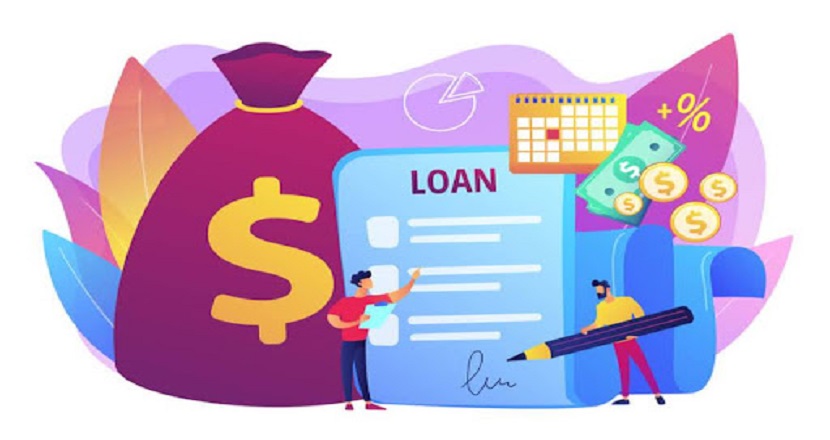Building a successful (Peer-to-Peer) P2P Loan lending app requires careful attention to key features and user experience. Essential elements include robust security measures, seamless user verification processes, and an intuitive interface. Additionally, it’s vital to integrate real-time notifications and detailed analytics to ensure both lenders and borrowers have a transparent and efficient experience. Let’s dive into these crucial considerations that can make or break your P2P lending app.
Introduction
Peer-to-peer (P2P) lending apps are revolutionizing the financial industry by providing quick, convenient, and accessible loans to individuals and small businesses. Unlike traditional banking systems, P2P lending platforms directly connect borrowers with lenders, often resulting in lower interest rates and faster loan approvals. This innovative approach not only streamlines the lending process but also opens up new opportunities for investors seeking alternative investment options. As P2P lending continues to gain traction, developing a successful app requires careful attention to essential features and user-centric design to ensure a seamless and secure lending experience.
How Do P2P Lending Apps Work?
P2P Loan lending applications revolutionize the traditional lending landscape by leveraging a selective formula for quick and efficient loan disbursement. The process begins with crowdsourcing funds, bypassing third parties to directly provide credit products to users. Loan approvals are based on data exchanged by users and analyzed by sophisticated algorithms that consider both online and offline data sets.
Often, credit applications might request personal information from users’ phones to ensure a comprehensive evaluation. Payments on these loans are secured as they are tied to credit ratings, motivating customers to maintain high credit scores. This innovative approach, combining the crowdfunding model, data-driven loan approvals, and credit rating guarantees, ensures a streamlined and effective lending experience for both borrowers and lenders.
Key Features of P2P Loan Lending App
P2P Loan lending apps come with several key features that enhance user experience and ensure seamless transactions. These features are designed to streamline the lending process and provide a secure, efficient platform for both borrowers and lenders.
Let’s explore the key features and considerations that can drive the success of a P2P Loan lending app.
-
Registration and Document Upload:
The registration process should be straightforward and secure, allowing users to easily sign up and upload necessary documents for verification. This step is crucial for ensuring the credibility and authenticity of both borrowers and lenders on the platform. Leveraging AI and OCR (Optical Character Recognition) technology can expedite the document verification process, making it faster and more efficient.
-
Loan Application Process:
An efficient loan application process is essential for user satisfaction. The platform should guide users through each step, from entering their loan requirements to submitting their application. Automated algorithms can assess the applicant’s creditworthiness and provide instant feedback, streamlining the approval process and enhancing user experience.
-
Loan Repayment Options:
Offering flexible loan repayment options is key to catering to a diverse user base. This includes various repayment schedules, automatic payments, and the ability to make early payments without penalties. Providing a clear breakdown of payment plans and interest rates helps borrowers make informed decisions and manage their finances effectively.
-
Customer Support:
Robust customer support is critical in addressing user concerns and maintaining trust. This can be achieved through multiple channels such as live chat, email, and phone support. AI-driven chatbots can provide 24/7 assistance, answering common queries and guiding users through basic processes, while human agents handle more complex issues.
-
User-Friendly Interface:
A user-friendly interface is paramount for ensuring a seamless experience. The app should have an intuitive design with easy navigation, clear instructions, and visually appealing elements. User feedback loops and regular updates based on user experience can help refine the interface, making it more responsive to user needs.
By integrating these key features, a P2P Loan lending app can provide a secure, efficient, and satisfying experience for all users.
Technological Advancements in P2P Lending
If you’re looking to explore the development of loan lending apps for financial services, there are numerous ways to add value and differentiate your offering from the existing pool. The following sections delve into the technological capabilities that can be leveraged to enhance your app’s effectiveness and appeal in this competitive market.
-
Artificial Intelligence (AI):
AI is transforming P2P lending by enhancing loan approvals, understanding customer needs, and providing advanced support. AI algorithms analyze vast amounts of data to improve risk assessment, credit scoring, and fraud detection, making the lending process more efficient and accurate.
-
Blockchain:
Blockchain technology is revolutionizing P2P lending by offering enhanced security, reliable identity verification, and smart contract capabilities. By creating a decentralized ledger, blockchain ensures transparent and tamper-proof transactions, reducing the need for intermediaries and increasing trust between lenders and borrowers.
Benefits of P2P Loan Lending App
- Faster Loan Approval Times: P2P lending apps leverage advanced algorithms and streamlined processes to approve loans much quicker than traditional banks. This efficiency is essential for borrowers needing immediate financial assistance.
- Lower Interest Rates: By cutting out intermediaries, P2P lending platforms often offer lower interest rates compared to traditional banks. This makes loans more affordable and accessible for borrowers.
- Greater Accessibility for Underserved Populations: P2P lending apps provide financial services to individuals who may be underserved by traditional banking systems. This includes people with less-than-perfect credit scores who still need access to loans.
- Convenience and Ease of Use: These platforms are designed for user-friendliness, allowing borrowers to apply for loans from the comfort of their homes. The intuitive interfaces and clear instructions simplify the entire lending process, making it more convenient for users.
Challenges and Considerations in P2P Lending
- Regulatory Compliance: Navigating the complex landscape of financial regulations is crucial for P2P lending platforms. Compliance with local and international laws ensures the legitimacy and trustworthiness of the platform, protecting both lenders and borrowers from legal risks.
- Risk Management: Effective risk management strategies are essential to mitigate potential losses. This includes thorough credit assessments, diversifying investments, and implementing robust security measures to safeguard against defaults and fraud.
- Data Privacy and Security: Ensuring the privacy and security of user data is paramount. P2P lending platforms must employ advanced encryption and secure authentication methods to protect sensitive information from cyber threats and unauthorized access.
- Customer Education: Educating users about the intricacies of P2P lending can enhance their experience and decision-making. Providing clear information on loan terms, risks, and the lending process helps users make informed choices and fosters trust in the platform.
Future Trends in P2P Lending
1. Integration with Other Financial Services
P2P lending platforms are increasingly looking to expand their offerings beyond just loans. This includes integrating with other financial services like wealth management, insurance, and payments. By bundling these services, platforms can provide a more comprehensive financial solution for their customers, increasing customer loyalty and revenue.
Example: A P2P lending platform might offer investment options for borrowers who have repaid their loans on time. or provide insurance products to protect lenders against default risk.
2. Expansion into Emerging Markets
As the global economy continues to grow, there is a rising demand for financial services in emerging markets. P2P lending platforms have the potential to fill the gap left by traditional banks, providing access to credit for underserved populations. However, there are challenges to consider, such as regulatory hurdles and infrastructure limitations.
Example: Platforms like Tala and Branch have successfully expanded into emerging markets in Africa and Asia, providing small loans to individuals and businesses.
3. Increased Use of Mobile Technology
Mobile devices have become an integral part of our daily lives, and P2P lending platforms are adapting to this trend. By offering mobile apps and responsive websites, platforms can provide a more convenient and accessible user experience. Additionally, mobile technology can enable features like real-time loan applications and payments.
Example: Many P2P lending platforms now have mobile apps that allow users to apply for loans, track their investments, and make payments on the go.
4. Personalized Lending Experiences
Leveraging data analytics and artificial intelligence, P2P lending platforms can offer more personalized lending experiences. By analyzing borrower data, platforms can tailor loan terms and interest rates to individual needs, improving the likelihood of repayment.
Example: Some platforms use machine learning algorithms to assess borrower risk and offer more flexible repayment options, such as weekly or biweekly payments.
Additional Tips To Consider
-
Include Case Studies of Successful P2P Loan Lending App:
Highlighting case studies of successful P2P lending apps can provide valuable insights into the strategies and features that have contributed to their success. Analyzing these examples helps illustrate practical applications, lessons learned, and the impact of innovative approaches on the lending market.
-
Compare P2P Lending to Traditional Lending Methods:
Comparing P2P lending to traditional banking methods can showcase the advantages and unique features of P2P platforms. This comparison can cover aspects such as interest rates, loan approval times, accessibility, and the overall user experience, providing a clear understanding of how P2P lending stands out.
-
Discuss the Impact of P2P Lending on Financial Inclusion:
P2P lending has significantly contributed to financial inclusion by providing access to credit for underserved populations. Exploring its impact on individuals and small businesses who lack access to traditional banking services can highlight the social and economic benefits of P2P lending, promoting financial empowerment and inclusion.
-
Provide Resources for Further Reading and Research:
Offering resources for further reading and research can help users deepen their understanding of P2P lending. This might include links to industry reports, academic studies, regulatory guidelines, and expert analyses. Enabling readers to explore the topic more comprehensively and stay informed about the latest developments in the field.
Conclusion
As the P2P lending landscape continues to evolve, the success of loan lending apps hinges on their ability to provide a seamless, secure, and user-friendly experience. By incorporating essential features like robust security measures, intuitive interfaces. Advanced technologies, developers can create platforms that empower individuals and businesses to access affordable and convenient loans. However, navigating regulatory challenges, managing risks, and ensuring data privacy remain crucial considerations for long-term success. By addressing these factors, P2P loan lending app can play a pivotal role in revolutionizing the financial industry and providing greater financial access to underserved populations.





2 COMMENTS
Comments are closed.